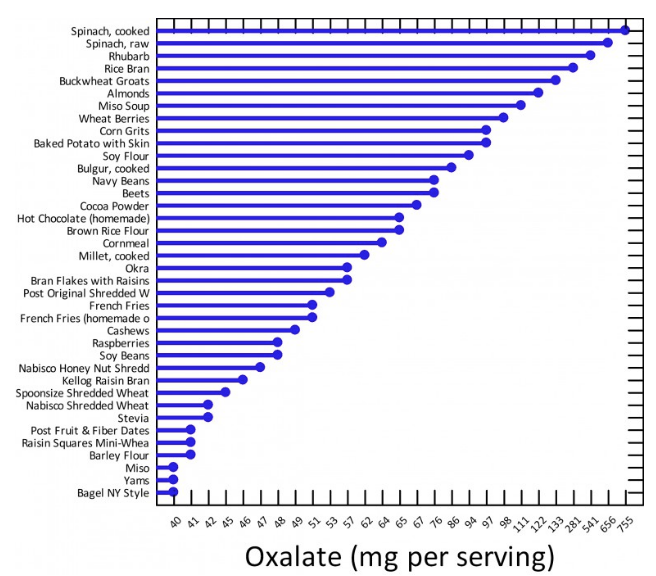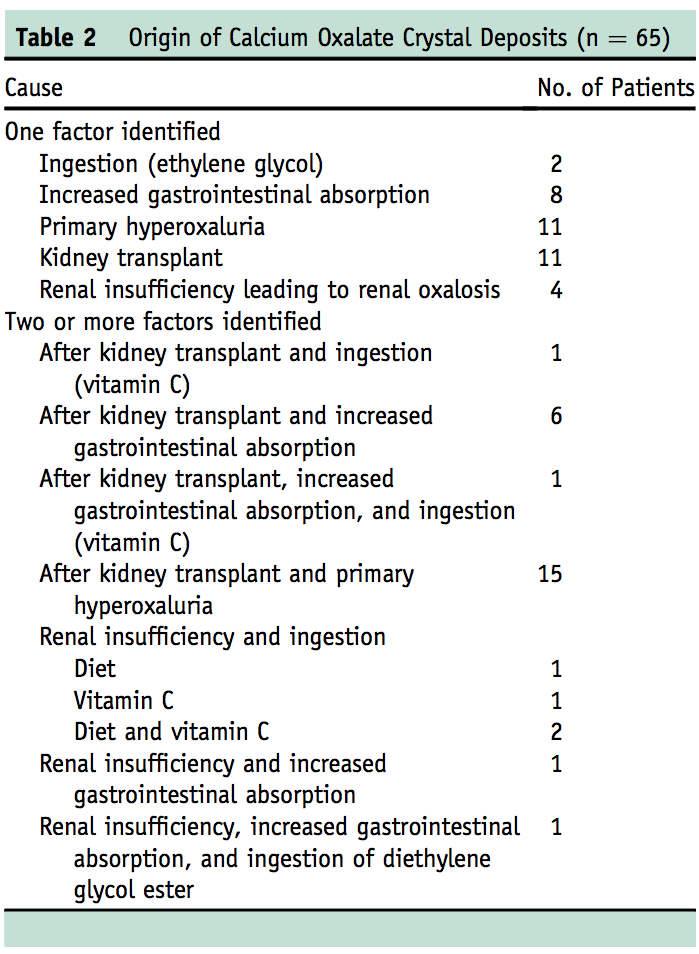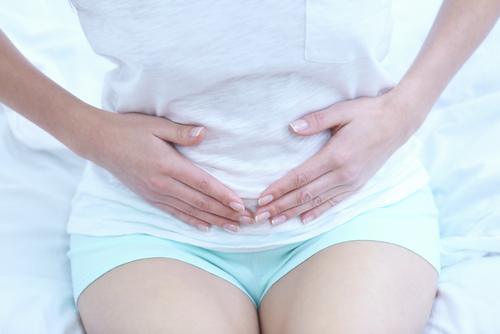I recently got a note from a woman named Sarah, asking if oxalates were to blame for her bouts of inflammation.
It got me to thinking more about oxalates. More specifically, how you could benefit from knowing the whole story about oxalate levels, where you can find them, and how they work.
Let’s talk all things oxalates today!
A Note From Sarah
As I mentioned in the introduction, this topic today was inspired by a question that I received from Sarah. She asked:
“I was told that I had high levels of oxalates on an organic acid test and that I should avoid them to lower inflammation. Is this a real thing?”
First and foremost, thank to Sarah for writing in. I think it is going to do many people a lot of good to learn more about oxalates. Second, my short answer is that oxalates are a thing, but only for a small amount of people.
Need to know more about what I mean, and if it applies to you? Let me give you some more details before we dive into specific oxalate concerns…
What Are Oxalates?
To put it simply, oxalates are organic acids that our body uses to make parts of our genes. More specifically, our bodies use oxalates to make uracil and orotic acid. These are essential parts of RNA (which helps copy DNA).
Every single lifeform on earth uses oxalates. This even includes the plants and animals that we eat. In this way, we can consider them biochemical building blocks. This is because every cell, in every living thing, has byproducts from oxalates.
Key Insight: Since oxalates are essential, we make about 40-80% of them inside of our bodies (out of essential and non-essential amino acids). The remaining amounts then come from our diets.

Oxalates can form complexes with calcium and can appear in the presence of inflammatory cytokines. These can show up in:
- Kidney stones
- Thyroid calcifications
- Benign and cancerous breast tissue
Let’s pull back a little bit. I think it is so important that we distinguish between the mediator of a disease and the cause. Typically, thyroid disease is mediated by normal immune cells such as lymphocytes. But, the cause is whatever caused the lymphocytes to attack the thyroid.
The lymphocytes themselves are not the ultimate cause. If this was the case, everyone with lymphocytes (which is everyone on Earth) would have thyroid disease.
This means that even though oxalates and calcium are present in calcifications, they are not the ultimate cause of calcification.
Key Insight: The body has elaborate systems to control the number of oxalates in the tissues. When it goes wrong, the reason is more complex than simply too much oxalate.
Apart from oxalate forming part of the chemical makeup of thyroid calcifications, they have no other known effects on thyroid disease.
Which Foods Are High In Oxalates?
There are a lot of foods that have oxalates, with almost all foods having trace amounts, but some foods are certainly higher than others.
The following are the top foods, put together by the Harvard School of Public Health.1 The foods not on this list are have lower than 40 mg of oxalate per serving.

This list is incredibly helpful to teach us how much oxalate is in our foods. In general, though, it does not tell us how much is getting absorbed in our bodies.
Bottom Line: Oxalates are pretty tricky to absorb. This means that it helps our discussion to formulate a clearer list of foods that have well-absorbed oxalates.
Well-Absorbed Oxalate Foods
A study on absorption showed that the only foods that increase the amount of oxalate in the urine include2:
- Spinach
- Beets
- Rhubarb
- Tea
- Chocolate
- Strawberries
- Wheat Bran
- Nuts
Key Insight: What did the study mean by nuts? Nuts can be a fairly broad category of foods. After reading the full text of the original article, it became clear to me that they were referring to roasted peanuts. No other nuts or seeds are high sources of bioavailable oxalate.
How Does Your Body Get Rid of Oxalates?
Like a lot of things, your kidneys help regulate the amounts of oxalates in the bloodstream.
This means that they essentially “sort out” how much we need, and then dismiss the rest. Somewhere around 95% of oxalates are cleared through the kidneys, through our urine.
There is also a fair amount broken down in the intestinal tract. As it happens, that rate is pretty variable depending on the available gut flora.
Some good bacteria like bifidobacterium and lactobacillus help a lot – and that is not even counting the potential for specialized bacteria like Oxalobacter formigenes.3
For a while, there were theories that, if oxalates were a concern, maybe you could adjust the gut flora to better handle them.
However, treatment with orally-administered oxalobacter has not been shown to change urinary or plasma oxalate levels in those with hyperoxaluria.4
Do Dietary Oxalates Cause Health Problems?
It is clear that we do need some oxalates, but is there a risk for too many oxalates?
For some people, the answer is yes. There are two main conditions here that I want to focus on. First I want to quickly make note that there are some theories that oxalates may contribute to calcium-oxalate kidney stone formation. The main issues we know of include:
- Hyperoxaluria – A genetic condition wherein high amounts of oxalate are made and excreted in the urine, and
- Oxalosis – The condition in which the kidneys are unable to get rid of oxalic acid and it builds up in the bloodstream.
Bottom Line: As it concerns oxalates and the development of inflammation, what we are seeing here is more of a genetic glitch where the body is making too much (rather than how much you are ultimately consuming).
Hyperoxaluria
How Common Is Hyperoxaluria?

Hyperoxaluria is genetic and often shows signs in infancy or early childhood. The most prevalent version of it, Primary Hyperoxaluria Type 1, is rare, affecting between 1/100000 and 1/1000000, based on ethnicity.
Of those who have it, it is not subtle. Truth be told, 90% experience symptoms as severe as kidney failure while still in their 30’s.5
If an adult has not had kidney stones or changes in kidney function, there is little risk that they have hyperoxaluria.
Key Insight: Hyperoxaluria is typically diagnosed in infancy. This means that if you are not diagnosed, there is very little risk that you have it.
Some of the popular health articles I have seen about oxalates also warned of oxaluria. This is a gout-like condition in which oxalates build up in the bloodstream and cause crystals.
It is a late-stage complication of hyperoxaluria, or a rare complication of late-stage kidney failure.

Do Oxalates Cause Kidney Damage?
While doing some additional research for our conversation today, I stumbled across some blog post titles that I just had to share. Here is what I found:
- “How Green Smoothies Can Devastate Your Health”
- “The Dark Side of Green Smoothies”
- “The Green Smoothie Health Fad: This Road To Health Hell Is Paved With Toxic Oxalate Crystals” (this one is my personal favorite)
The tie-in here is that greens are rich in oxalates, all of them, and spinach are the highest.
Remember when we discussed this idea of absorbable oxalates? Well, spinach does have absorbable oxalates. It is a popular ingredient in green smoothies!
In the natural health blogosphere, these titles can often call to mind images of the sky falling. That said, where did the inspiration for these ominous articles come from?
There was a case report written up about a 65-year old woman who had some severe symptoms, and it turned out that she was in late-stage kidney failure.
She had a gastric bypass procedure performed in the past, a long history of diabetes, and she had been on a certain type of antibiotic for about a six-week period.
After all of these things came together she, unfortunately, developed kidney failure. As it happens, it also turned out that she had been drinking green smoothies while all of this was going on.
The problem here is that the article itself really tied this fact in, and almost identified the green smoothies as the sole culprit.6
The article went on to argue that dietary oxalates were the largest factor in her case and that in this woman’s case there were no nephrotoxic agents (nothing else there that should have harmed her kidneys, leaving the green smoothies as the only negative factor).
Was this true, though?
It really surprised me that the researchers came to this conclusion. That’s specifically because the antibiotics she was taking were a known kidney-toxic drug.
In fact, there have been papers written on it and its potential for acute kidney damage.7
Therefore this woman, who had already potentially endured kidney damage from a long history of diabetes, was now using a drug that had potentially harmful effects on the kidneys.
On top of all this, gastric bypasses can leave people with malabsorption patterns. It really is a sad story, but it was the perfect storm for this – and I find it really difficult to blame green smoothies alone.
Bottom Line: Normally the kidneys clear the bulk of the oxalates, but if the kidneys are compromised, the gut can take over that amount. This isn’t the case if you have had gastric bypass, or are on broad-spectrum antibiotics.
While I do agree with the idea that the oxalates may have been a precipitating factor in this sad case, it may well have been just as likely to happen in the absence of them, too.
The truth is that there really is no information from this case report that connects kidney failure solely to oxalates.
Calcium Oxalate Crystals
Our kidneys filter our blood and control the amount of many compounds taken out of our blood and sent to our urine.
Along with oxalates, others include:
- Calcium
- Urea
- Sodium
- Phosphorus
When the kidneys are damaged, these compounds may build up in the blood. However, this does not mean that these compounds caused kidney damage.
Since the kidneys play an essential role in regulating our chemistry, when they do not work right, many harmless things can become harmful.
Those with kidney damage may need to monitor their intake of fluids, phosphorus, calcium, magnesium, and protein.
In a comprehensive evaluation of acute kidney failure with calcium oxalate crystals, all patients had advanced kidney damage that left them unable to clear oxalates. There have been zero cases of people with normal kidney function who had kidney damage from dietary oxalates.

Bottom Line: Oxalates are critical to be aware of for those with kidney failure. So is protein, fat, sodium, phosphorus and potassium.
Do Dietary Oxalates Cause Kidney Stones?
This is a question that comes up quite a bit. To me, this link sounds a lot more plausible.
That is because many people do put out too much oxalate in their urine. Therefore, some kidney stones are made from what is known as calcium oxalate complex.
Therefore, it would seem pretty straightforward that if you could lower the amount of oxalate in the urine, you could improve the overall formation of kidney stones.
Is it true, though? The consensus is that it does not help.8 The truth is that you do not lower your oxalate output by lowering your dietary intake, and that is because your body makes the bulk of it on its own.
What controls the oxalate in our urine, though? Here’s what we have learned:
- Poor hydration
- Too much sodium
- Low amounts of fiber, magnesium & calcium
Key Insight: These are all the clear-cut and controllable dietary triggers of oxalate-containing kidney stones.9
In a study of patients with unexplained recurrent calcium oxalate kidney stones, a diet with high amounts of water, adequate calcium, and low amounts of sodium proved to work better at reducing the urinary levels of oxalate than a low-oxalate diet.10
Bottom Line: Low-oxalate diets do not prevent calcium-oxalate kidney stone formation. In fact, no studies have shown that to be the case.11
The most interesting part of all of this is that even in those with genetic hyperoxaluria, foods high in oxalates like tea, may lower their risk of calcium oxalate kidney stones!12
Are There Any Reasons To Avoid Oxalates?

I have seen plenty of quotes discussing other health issues related to oxalates, but what do they mean and how much can we really take away from them?
One quote, in particular, suggested that oxalate accumulation has been associated with:
- Chronic pain
- Kidney stones
- Neurological symptoms
- Vulvar pain
- Fibromyalgia pain
In all the foods mentioned in this study, such as spinach, chard, dandelion greens, beets, collard greens, berries, broccoli, cabbage, and carrots, only two of the foods on the list contain bioavailable oxalate – spinach and beets.
Yes, they can accumulate and result in inflammation, but that is only in the case of oxaluria (which is a complication of a rare disease, like we discussed before).
Do Dietary Oxalates Cause Neurological Symptoms Or Fibromyalgia?
Honestly, there is no scientific literature currently out there which proves that claim.
Do Dietary Oxalates Cause Vulvodynia?
There was a case report in 1991 which profiled a woman who was suffering from an unexplained vaginal pain for a period of about four years.13
She was dealing with severe pain, and was found to have high levels of urinary oxalate. From there, a link was formed.
From there, the doctor prescribed calcium citrate to help this woman, and she seemed to do much better. Since then, multiple studies have been done analyzing the proposed relationship between dietary oxalates and vulvodynia.
One of these studies, which showed that 10% of participants on a low oxalate diet had less pain on intercourse, but the researchers concluded that oxalates were not a factor.14
How did researchers come to this conclusion? There are two main reasons:
- The amount of urinary oxalate excreted by those with vulvodynia was the same as a similar group of women without vulvodynia.
- The response rate of 10% to a low-oxalate diet is as low or lower than typical placebo response rates to vulvodynia treatments. One recent study on a topical treatment showed that a placebo worked 8-20% of the time.
- Another study, involving low-level laser therapy for vulvodynia showed a placebo response rate of 44%.15
Going even further, another paper in 2008 found that there truly was no association between vulvodynia and urinary oxalate. This is now reflected in current treatment guidelines, as well.16
Do Genes Predict Adverse Reactions To Oxalates?
There has been one gene identified, which everyone has, but in different variants.
People that form kidney stones more easily have variants of this gene which are more common.
So far, though, no scientists have said whether or not people who do not have kidney stones have that variant more commonly or less commonly.17
Bottom Line: There are no genetic markers that predict harm from oxalates.
Who Should Monitor Their Oxalates?
There are two key groups that should focus on monitoring their oxalates, these include those with:
- Genetic hyperoxaluria
- Late-stage kidney disease
What If You Feel Better When Eating Fewer Oxalates?
This is a big one. What if you have made changes to your diet, and have lowered your dietary oxalate intake, and now you are starting to feel better.
Is it because of having fewer oxalates? I have a few thoughts on this that you should also consider.
Think about reactions to certain foods for other reasons (beyond oxalates), and how they might be affecting you.
Also, consider a nocebo reaction. A placebo reaction is when something that could not help seems to help. Nocebo is the opposite.
It is entirely possible for educated and rational people to notice side effects from something harmless, especially if they have been told to expect side effects.
In one study of a medication to treat nerve pain18, 72% of the major side effects reported came from those taking a placebo – a pill unable to cause side effects. Top reactions included:
- Headaches
- Nausea
- Worsening of pain
- Bloating
- Fatigue
- Memory loss
Nocebos cause more than nuisance symptoms. The fear of harm can not just cause symptoms, it can cause diseases as significant as fatal heart disease.
Middle-aged woman have about a 30% increased risk for fatal heart attacks if they have high cholesterol19 and about a 200% increased risk if they smoke.20
Would you even believe that a large study showed that women who believed they were at risk for heart disease had 370% more fatal heart attacks that women with the same risk factors who did not believe they were at risk?21
Many high-oxalate foods are also foods high in histamine and salicylates. Consider these food constituents as alternate causes of symptoms.
What If You Have High Levels Of Oxalates (Acid Test)?
Some have speculated that a “high” level of oxalates is caused by yeast or metal toxicity.
Apart from tracking people with recurrent calcium oxalate kidney stones, urinary oxalate has not been validated to predict any disease states.
Key Insight: I understand the thought process connecting urinary oxalates with dysbiosis or metal toxicity. These are important ‘root causes’ that are good to catch and take care of. If you suspect them, I prefer to test more directly.
Instead, I would recommend on learning more about testing for toxins and digestive issues (Read: IBS, the myths). Even if you did have these conditions, there is no reason to think that limiting dietary oxalates would be helpful.
What About Preventing Kidney Stones and Kidney Disease?
As we learned before, what I want you to know more than anything is that dietary oxalates do not cause kidney stones and that avoiding them does not help with those who form calcium oxalate kidney stones.
Key Insight: The best thing you can do for prevention is to keep yourself hydrated, along with calcium, dialing in your sodium, and getting adequate protein.
Those with kidney disease need to limit dietary oxalates, however, they also need to limit common dietary constituents like phosphorus and magnesium. None of these cause kidney disease.
Why Not Be Safe And Cut Out Oxalates Anyways?

There is an easy answer to that! When you see a list of foods that are high in dietary oxalates, it reads like a who’s who of superfoods with amazing health benefits:
- Spinach (Spinach and Pomegranate Salad Recipe)
- Beets (Beet Fennel Soup Recipe)
- Tea (Mental Reset Tea Recipe)
- Chocolate (Read: Chocolate, everything you need to know but haven’t been told)
- Strawberries (Wild Blueberry Chia Oatmeal Recipe)
Please do not worry about foods like these, and understand that when executed correctly they can be huge boosts to your diet (and your overall health).
Get To The Root Of Inflammation Today
If you have unexplained inflammation and oxalates are not to blame, what should you do?
The first thing I would recommend is to please see if your thyroid could be a culprit. Take the Thyroid Quiz (Click Here) today, and learn more about your body, your health, and your life.
Sources
1 – https://regepi.bwh.harvard.edu/health/Oxalate/files
2 – https://www.ncbi.nlm.nih.gov/pubmed/8335871
3 – https://www.ncbi.nlm.nih.gov/pmc/articles/PMC5358548/
4 – https://www.ncbi.nlm.nih.gov/pubmed/27924398
5 – https://www.counsyl.com/diseases/primary-hyperoxaluria-type-1/
6 – https://www.ncbi.nlm.nih.gov/pubmed/29203127
7 – https://www.ncbi.nlm.nih.gov/pmc/articles/PMC3708027/
8 – https://www.ncbi.nlm.nih.gov/pmc/articles/PMC2518810/
9 – https://www.ncbi.nlm.nih.gov/pubmed/26150027
10 – http://www.pagepressjournals.org/index.php/aiua/article/view/aiua.2015.2.105/4756
11 – https://kidneystones.uchicago.edu/low-oxalate-diet
12 – https://www.ncbi.nlm.nih.gov/pubmed/16724910
13 – https://www.ncbi.nlm.nih.gov/pubmed/1816400
14 – https://www.ncbi.nlm.nih.gov/pubmed/22968058
15 – https://www.ncbi.nlm.nih.gov/pubmed/28970071
16 – https://www.ncbi.nlm.nih.gov/pubmed/27045258
17 – https://www.ncbi.nlm.nih.gov/pmc/articles/PMC3819931/
18 – https://www.ncbi.nlm.nih.gov/pubmed/22336767
19 – https://academic.oup.com/cardiovascres/article/53/3/538/324835
20 – https://www.surgeongeneral.gov/library/reports/50-years-of-progress/sgr50-chap-8.pdf
21 – https://www.ncbi.nlm.nih.gov/pubmed/8568997

1. Schedule a Thyroid Second Opinion with me, Dr. C, Click Here for Details
2. Download and use my Favorite Recipes Cookbook Here
3. Check out my podcast Medical Myths, Legends, and Fairytales Here
Dr. Alan Glen Christianson (Dr. C) is a Naturopathic Endocrinologist and the author of The NY Times bestselling Adrenal Reset Diet, The Metabolism Reset Diet and The Thyroid Reset Diet.
Dr. C’s gift for figuring out what really works has helped hundreds of thousands of people reverse thyroid disease, lose weight, diabetes, and regain energy. Learn more about the surprising story that started his quest.


